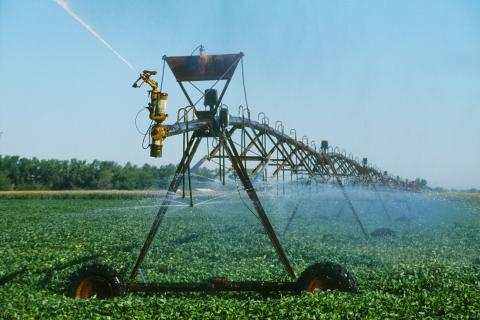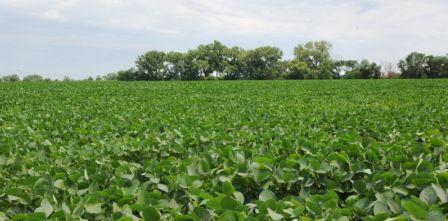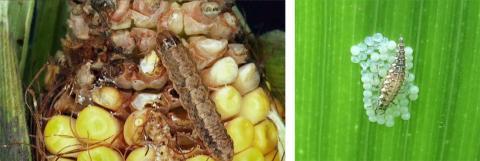Scouting and Managing Stalk Borer in Corn
May 24, 2017
Common stalk borer eggs have hatched throughout Nebraska and scouting should begin when 1300-1400 degree days (DD) have accumulated. Current accumulations range from 500 to 1200 DD.
Watch for Palmer Amaranth in Conservation Reserve Program (CRP) Fields
May 12, 2017
Palmer amaranth has not been confirmed in conservation plantings in Nebraska; however, the identification and occurrence of Palmer amaranth in CRP fields in Iowa has raised concerns among weed scientists and growers about its spread into conservation plantings in Nebraska and offer some suggestions for growers.
Scout Emerging Corn for Early Season Insects
May 11, 2017
As corn begins to emerge, be alert to the potential for damage from early season insects such as cutworms, wireworms, or white grubs. Wireworms and white grubs are most often associated with fields that have been in pasture or CRP where the grasses were allowed to grow for more than one year. It is rare to see these problems in continuous corn, but exceptions happen. Since wireworms and white grubs feed underground and cutworms feed on or below the soil surface, scout for plant damage and then dig in soil around the plant to identify the insect causing the damage.
Scouting Advised for Alfalfa and Clover Leaf Weevils
April 20, 2017
Alfalfa weevils have been reported damaging alfalfa in north central Kansas and western Nebraska. As temperatures warm up, expect to see alfalfa weevil larvae in southern Nebraska and slightly later, in northern Nebraska. Even with the pressure of planting row crops, it is essential that producers growing high quality alfalfa hay make time to monitor fields for weevils now and over the next few weeks. See the article for a table of treatment thresholds for various alfalfa prices.
Japanese Beetles Migrating West
April 13, 2017
A newly released map of confirmed Japanese beetle populations in Nebraska shows their westward movement from where they were first identified near Lincoln and Omaha several years ago.
Planting Soybean after Soybean (Part 2): In-Season Management Considerations
April 13, 2017
In Part 1 of this article, we look at considerations for planting soybean after soybean. In this article, Part 2, we share considerations for in-season management.
Planting Soybean after Soybean (Part 1): Planting Considerations
April 13, 2017
Farmers are increasing their soybean plantings for 2017, which likely means some are shifting to soybeans-after-soybeans. This article looks at what you should be considering at planting time as you consider changing your cropping sequence.
Which Bt Traits Do You Need to Purchase?
March 24, 2017
When it comes to buying corn seed, one way to save money can be to ensure that you don't invest in GMO insect protection traits that you do not need for your particular farm or field. Which corn rootworm, western bean cutworm, or European corn borer traits do you need? This article can help you determine which of the nine types of Bt proteins might best serve your needs.








